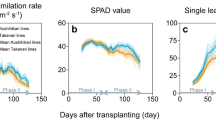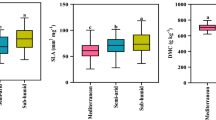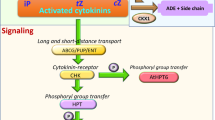Abstract
LATE (Sn Sn) pea varieties respond to long days and vernalization by flowering at a lower node1. Paton2 suggested that the product of leaf area and photoperiod governs the first node at which flowering occurs. If this is so, defoliation treatments should have an effect on the node of first flower (F). I have conducted several experiments to test this hypothesis. In general, the only conclusion to be drawn from the results (those for a typical experiment are shown in Table 1) is that leaves apparently have little effect on flowering.
This is a preview of subscription content, access via your institution
Access options
Subscribe to this journal
Receive 51 print issues and online access
$199.00 per year
only $3.90 per issue
Buy this article
- Purchase on Springer Link
- Instant access to full article PDF
Prices may be subject to local taxes which are calculated during checkout
Similar content being viewed by others
References
Barber, H. N., Heredity, 13, 33 (1959).
Paton, D. M., Ph.D. thesis, Univ. Tasmania (1956).
Cathey, H. M., and Borthwick, H. A., Bot. Gaz., 125, 232 (1964).
Moore, T. C., Plant Physiol., 39, 924 (1964).
Barber, H. N., and Paton, D. M., Nature, 169, 592 (1952).
Borthwick, H. A., and Downs, R. J., Bot. Gaz., 39, 125 (1964).
Author information
Authors and Affiliations
Rights and permissions
About this article
Cite this article
SPRENT, J. Role of the Leaf in Flowering of Late Pea Varieties. Nature 209, 1043–1044 (1966). https://doi.org/10.1038/2091043a0
Issue Date:
DOI: https://doi.org/10.1038/2091043a0
This article is cited by
-
Influence des corrélations entre organes sur la croissance et le développement floral des bourgeons cotylédonaires chez leScrofularia arguta Sol.
Biologia Plantarum (1970)
-
Leaf Status and Photoperiodic Control of Flower Initiation in a Late Variety of Pea
Nature (1967)
-
The effects of benzyladenine on the growth and development of peas
Planta (1967)
Comments
By submitting a comment you agree to abide by our Terms and Community Guidelines. If you find something abusive or that does not comply with our terms or guidelines please flag it as inappropriate.



